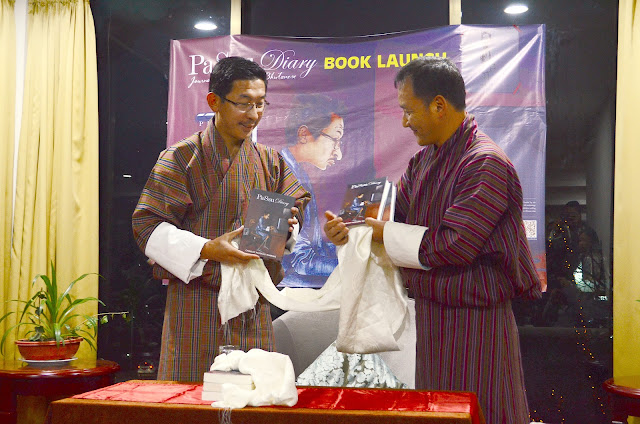Bhutanese history has never been among the favorite subjects of students. The average Bhutanese tends to know more about the histories of other countries than about our own. The history taught in schools has largely been a collection of fragmented events of perceived importance, often glorified to the extent that they resemble fairy tales. What has been missing is a coherent narrative that connects these events and historical figures in a meaningful way.
It may be argued that the history taught in schools serves merely as a foundational introduction and cannot be expected to capture the full breadth and depth of Bhutanese history. However, even beyond school, those seeking to explore Bhutanese history further often find themselves frustrated by the lack of accessible, comprehensive sources.
Dr. Karma Phuntsho’s The History of Bhutan answers this long-standing need for a well-researched, cohesive account of our past. It not only provides a superior alternative to the limited historical sources we have relied on—many of which were ironically documented by Indian or Western historians—but also offers an unbiased perspective grounded in rigorous research.
Spanning 599 pages, the book covers Bhutanese history from prehistoric times to the modern era, passing through a richly detailed medieval period. For the first time, Bhutanese history is presented in a manner that feels authentic and compelling without the embellishments of myth and legend.
This book may challenge some of us who have taken pride in the more mythical versions of our history, where our ancestors seemed almost superhuman and infallible. But learning about historical figures with their human flaws, and seeing how they overcame obstacles despite these imperfections, only deepens our appreciation for their achievements.
For instance, I grew up hearing rumors of Zhabdrung Ngawang Namgyal’s assassination, yet I remained confused about how he could have been assassinated when he had voluntarily entered permanent retreat in Punakha Dzong. This book clarifies the complexities surrounding Zhabdrung’s succession, detailing the controversies over incarnations that followed his passing. The political maneuvering around multiple claimants to his legacy eventually paved the way for the era of lay rulers. It was only through reading this book that I realized the stories I had heard were about different incarnations and not about the great Zhabdrung himself.
The book vividly recounts the intrigues, conspiracies, rebellions, and assassinations that shaped Bhutan’s internal conflicts, making our history as thrilling as any political drama. Similarly, the accounts of Bhutan’s wars with Tibet and later with British India offer a more nuanced perspective than the simplified narratives of effortless victories that we grew up hearing. Instead, the book shows the immense struggles our leaders endured to defend Bhutan’s sovereignty. It sheds light on how, from the Treaty of Sinchula onward, our leaders skillfully negotiated diplomatic pathways to ensure Bhutan’s independence. The careful wording of these treaties ultimately played a crucial role in preserving Bhutan’s sovereignty, even as over 500 princely states were absorbed into the Republic of India, including Sikkim in 1975.
Many of us believe that stability was firmly established after the rise of Jigme Namgyal, and even more so after the enthronement of Gongsar Ugyen Wangchuk as Bhutan’s first king in 1907. However, this book reveals the immense struggles involved in consolidating power and maintaining stability. Even during the reign of the second king, Jigme Wangchuk, internal power struggles persisted. The book offers invaluable insights into the changing political landscape, both internal and external, during the successive reigns of Bhutan’s monarchs. Beyond the lists of developmental milestones found in school textbooks, The History of Bhutan gives us a deeper understanding of the political acumen and steadfast leadership that shaped the nation we have today.
Without reading this book, no Bhutanese can truly separate myth and legend from historical fact, nor fully grasp the depth of our history and the resilience that has allowed Bhutan to remain the last surviving Himalayan kingdom between two of the world’s largest nations.
If so many historical sources were available, why did it take so long for such a comprehensive history to emerge? The answer lies in Dr. Karma Phuntsho’s unique strengths. His deep grounding in Buddhist scholarship, with mastery over Chödkey, gave him access to historical records embedded in religious texts, while his experience as an academic researcher at Oxford allowed him to access and analyze Bhutanese records archived in British libraries. These combined skills enabled him to bring forth a historical narrative that had remained largely inaccessible to Bhutanese readers.
 |
| Dr Karma Phuntsho at the launch of my book, Passu Diary in 2018 |
Dr. Karma Phuntsho’s The History of Bhutan is not just a book—it is a monumental contribution to our national identity. It offers us a rare chance to reconnect with our past, not through myths and glorified tales, but through a well-documented, truthful account of how Bhutan came to be what it is today. Every Bhutanese who wishes to understand our history beyond the fairy tales must read this book.























